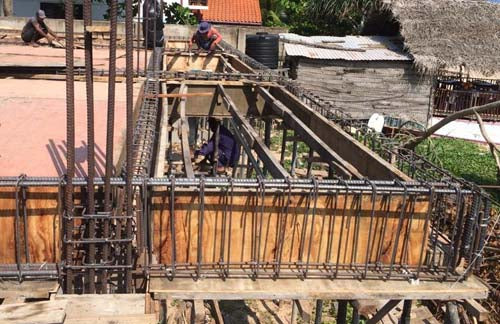What is momentum redistribution? The answer is not entirely simple. The redistribution of moments in concrete beams occurs for several reasons. Some of them are related to structural analysis and others to reinforcement detailing. Furthermore, moment redistributions are normally carried out in continuous beams.
BS 8110 Part 1 provides clear guidelines for implementation and verification.
For more information on defining motion distribution, see Wikipedia article could be referred.
Below are the key points related to moment redistribution of RCC beams.
- More economical, to allow a redistribution of negative moments
- Utilizes the ductility of reinforced concrete beams
- Reduces the complexity of reinforcement details in beam-column connections and creates more space for concreting


By reducing the negative moment near the supports, an inelastic hinge can be formed, allowing the beam more freedom to rotate as the load increases. If loads are increased than expected in the design, cracking may occur and crack formation may be considered a warning of failure.
Furthermore, it should be noted that structural elements are designed for an x/d ratio lower than the value determined under equilibrium conditions. This allows for additional changes in the bending moment for several reasons.
According to BS 8110, the design considers x/d = 0.5 when the equilibrium condition is x/d = 0.64.
Furthermore, changes in the bending moment in the structure may be due to the following reasons:
- Higher than expected side loads during construction
- Due to the problem under construction
Therefore, a low value of x/d could be considered for the project.
Furthermore, there may be another important reason for this.
The maximum elongation that concrete can withstand is 0.0035 and the elongation at which steel will yield is 0.002. The elongation at break of concrete is much higher than these values.
If you choose an x/d value of 0.5, the stress in the concrete will be reduced to 0.002. Concrete, therefore, has more space to behave.


Torque redistribution according to BS 8110 Part 1
There are essentially two criteria for momentum redistribution
- Redistribution of moments in low-rise buildings (four stories or less)
- Redistribution of moments in tall buildings (more than four floors)
Redistribution of moments in low-rise buildings
To this end, the buildings were divided into low and high buildings to facilitate understanding.
According to BS8110, maximum redistribution is possible where the number of floors is four or less. Thus, the moment redistribution can be up to 30%, regardless of whether lateral stability is guaranteed by the frame or by another method.
As the building becomes smaller, the lateral forces are smaller and therefore the probability of moment distribution is smaller.
Redistribution of moments in tall buildings
If the number of floors is more than four and lateral stability is guaranteed by the concrete frame structure, the moment redistribution must be limited to 10%.
If systems are in place to maintain lateral stability, the percentage of redistribution can be increased.
For example, if buildings are designed so that the load-bearing wall supports all lateral loads, the percentage of redistribution could be greater than 10%.
For more information, see the article Construction of beams to BS 8110 .

